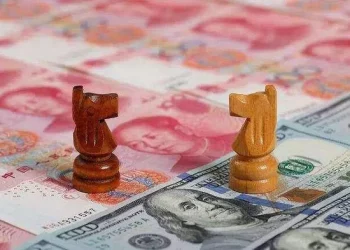Understanding the environment in a higher dimension can effectively improve our ability to face the difficulties of the current dimension, and it makes sense to invest in understanding different dimensions.
At the end of 2014, two blockbusters, Superbody and Interstellar, tried to expand the audience’s understanding of the dimensions of the world through the world of quantum physics, although understanding the different dimensions of quantum physics has no “practical” meaning for daily life, after all, we can’t go back to yesterday to buy a lottery ticket that won the jackpot today.
But understanding the environment in a higher dimension can effectively improve our ability to face the difficulties of the current dimension, and it is also a good idea to invest in understanding different dimensions.
In a one-dimensional world of investing, there is only the concept of a single company. The much-used slogan “good companies equal good investments” is very confusing to those who are not involved in the stock market. Any attempt to simplify and dotise investing ends up costing you money.
In the one-dimensional world of investing, the only truth of investing is that a company that does well today and tomorrow should do well for generations to come.
Another slogan in one-dimensional investing is “to buy a stock is to buy a piece of the company.”
This quote is not based on Buffett’s early days as an active value investor, when he sought out companies trading at a discount to net asset value and then bought enough shares to sway the board and push the company to unlock previously suppressed value.
It is simply not possible for the average investor to buy enough shares to influence a company’s decisions.
So stocks that are below their net worth, they may stay below their net worth.
Two-dimensional investment For two-dimensional investors, in addition to the concept of the company, also adds a price dimension.
How much a company’s stock is worth varies from person to person, depending on their cognitive ability.
If a company’s stock price has a large value depression with its actual value, and there is a consensus in the minds of most investors, then investor behavior itself will narrow this value depression.
Other investors will receive the goods at a higher price, because the value of the company is also increased through asset injection or value from plastic. In addition to the artificial increase in the value of the company, the stock price rises because the investors believe that they will be sold to other investors at a higher price until the means of value improvement are exhausted and cannot attract new followers.
Stock prices could turn around and collapse.
Soros’s reflexivity is a good explanation for this behavior.
The three dimensional investment world, in addition to the company, price factors, also includes the external environment.
No matter which country’s farmers will not sow in winter, and many investors in the good company + good price (good price is not exactly equal to cheap price) judgment Bo bottomed out when the rebound, usher in often is not deep set.
It’s as if a farmer decides to plant his seeds based on the temperature alone. There is always a time when the temperature is the same in autumn and spring, when the cold winds of autumn herald the coming of winter, and the cold temperatures of spring herald the warm winds of summer.
The stage of a company’s industry development, and its position in the era.
Whether the company’s management is sailing against the current or with the wind at its back, would Jobs have had the same social impact if he had been placed in industries such as coal and steel?
In the four-dimensional world of investors, in addition to good companies, good prices, the external environment, there is also a concept of time.
When making a choice, nothing can escape the amplification of the consequences of time.
Right behavior time is your friend, wrong behavior, time will torture you to death.
All that is needed is the east wind, and time is the “east wind” that drives events in the direction you want them to go.
Hold a business long enough and all imaginable black swans will come into your pond.
A company rises tenfold in 10 years, falls in the first three years, fluctuates in the middle three years, and rises tenfold in the last three years.
An investor with a good sense of time should be busy with other investments for the first six years and only step in for the last three.
In addition to avoid being the last person to enter the market, do not die on the beach in the eyes of others “front wave”.
In addition to the company, the price, the macro, and the time, the five-dimensional investor has another dimension called risk.
Risk itself has three dimensions. The first dimension is systemic risk.
As long as you keep investing, there will be a financial crisis like the one in 2008. You don’t need to be too afraid of this kind of risk, because systemic risk is the same source of profit and loss.
Unless you avoid entering the stock market, otherwise this risk is bound to encounter.
The second dimension of risk is personal risk, mainly because investors themselves do not have complete investment ability and good mental control, which requires years of hard work and practice, and a lot of efforts and tuition fees to reach the average level of a market.
In the general field, if the average line is 50%, but in the investment field, there will certainly not be 50% of the people making money. There is a statistic in the futures before, 90% of the people lose money, 8% break even and 2% make money.
Stocks may not be that difficult, but the percentage of long-term profits won’t exceed 10%.
The third dimension of risk comes from the profit-making strategies of those in the top 10%.
This risk is called success dependence.
When investors find a strategy that has performed well over time, it is easy to become convinced of it and to be flattered by earnings.
Given that a stopped clock is on time twice a day, the effectiveness of an investment strategy before it fails, it is difficult to discern whether the value of an investment strategy is something that can continue to evolve or is simply a product of the investment environment at a particular time.
For five dimensional investors, how to deal with these three kinds of risks is an effective reflection of their professional ability.
The sixth dimension of investing Investing itself is an art of choice, and how to make the best decisions about the future is at the heart of what investors do every day.
And the best choices are not necessarily confined to the stock market.
The stock market is only a tool platform for qualified participants in the real economy to reflect their intrinsic value changes by means of securities trading.
If investors really have an eye for investment opportunities, they will find industries or people worth investing in both the traditional capital market and the real economy.
The division of labor in the global economy is becoming more and more clear. Independent modern economy no longer exists. Every country and industry are inextricably linked.
When the US government scrapped a decades-old ban on crude oil exports mid-year, it signalled a long-term decline in oil prices, extending the big negative for both shale gas and renewables.
A single oil market signal can lead to investment strategies in several different sectors and national markets.
The starting point of this cycle is that after the nuclear crisis in Japan in 2011, all nuclear power units in Japan stopped, and Germany also announced its plan to abolish nuclear power. In addition to causing the glaze price to fall for several years, it also triggered the enthusiasm of photovoltaic and wind energy investment in recent years.
Investors with a six – dimensional perspective have the ability to think about the market and move the whole picture.
It can use the information of a single market to extend the profit strategies of different countries, different markets and different trading instruments.
And can use hedging to reduce the risk of the total position at the same time, with the position of a low proportion of highly leveraged trading tools to make the gain.
The 1-6 dimensions of investment written in the front of the seventh dimension of investment are all based on the perception of the external world by the investor as a subject through self-thinking as a filter of external conditioning.
The investment difference in the seventh dimension is perceived from the outside world and reflected back into the investor’s own internal world.
When an investor is trying to filter out dozens of times the big bull stocks in the market, the big bull stocks are actually filtering investors.
As long as do a few years of Hong Kong stock people, basically have bought Tencent, a stock up more than 180 times.
Few people earn more than 10 times on Tencent.
As investors sift through indicators, analyze macro industry trends, and patiently communicate with company viPs, the stock itself may do the same thing to filter investors.
Investors differ like everyone has a different look, just like this one.
The same stock, some people gain and some lose, but a few people earn dozens of times.
This very few people, like the market very few big bull stocks, irregular distribution.
Investors sum up the “commonality” of Niu stock by post-induction. Niu stock is also testing the quality of investors. Whether Niu stock has rare internal quality and can completely precipitate external opportunities through the deep internal world is a key factor in the formation of the seventh dimension difference.
For example, some people apply only one layer of butter, but very few people will melt the whole piece of butter, let themselves like a sponge to absorb all the essence, after cooling themselves into the piece of butter.
The seventh dimension, from investors filtering the opportunities of the outside world with themselves as the carrier, reflects back to the internal quality of the outside world filtering investors through market opportunities.
Hard work spells luck, luck spells talent, and talent spells internal capacity.
The perception of the world such as duckweed a prey, and long-term accumulation of survive and repeatedly refined, is the key to the differences in the seventh dimension, look at the seventh dimension like under the Himalayas to see the top of the hill, came to see, and how to treat and pursue the seventh dimension, the only thing you can think of is, sets up the lofty and long-term goals,
Make sure you’re going in the right direction, and keep your feet on the ground every step of the way.
Summarize the importance of independent deep thinking ability for investors.
It is as necessary for a cook to have a sensitive tongue as it is for a surgeon to have calm hands.
Each of the seven dimensions of investment must be a superposition of the last.
Understanding the different dimensions of investing, trying to learn the knowledge needed to navigate them, and trying to refine the experience in the actual process, is a daily requirement for professional investors.


























